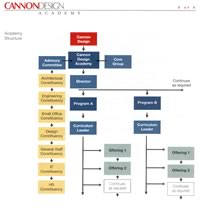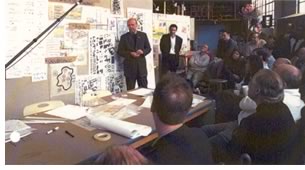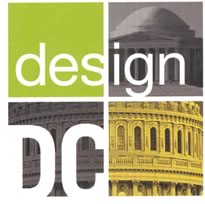

1/2006

The winners of the 2006 AIA Continuing Education System Awards for Excellence have been named. Three companies will be awarded a trophy at the 2006 AIA National Convention next June in Los Angeles, Calif., for their commitment to high-quality professional continuing education programs that advance the building industry.
AIA Large Firm—Over 100 Employees Category
![]() Cannon
Design, Grand Island, NY
Cannon
Design, Grand Island, NY
Over the past seven years, Cannon Design has increased
its emphasis on professional development. Founded 50 years ago, this
global architecture, engineering, and planning firm has grown to a staff
of almost 700. Cannon Design’s far-ranging
work includes specialized health-care institutions; state-of-the-art
research centers; university, primary, and secondary school campuses;
sports and recreation facilities; commercial offices; and hotels, convention
centers, and retail developments.
 In
its Award for Excellence submission, Cannon Design described its approach
to continuing education: “We offer a thoughtful and
strategic approach to education and professional development, taking
into account our diverse workforce. Our approach to education encompasses
the learner’s needs throughout the continuum, from new-hire orientation
to high-level continuing education and credentialing.” Cannon
Design’s Forums are an integral part of its extensive continuing
education programs. Held on a regular basis, each forum allows architects,
interior designers, and graphic designers of all levels to assemble with
architecture students to share ideas and knowledge creatively that focus
on a specific client-oriented project.
In
its Award for Excellence submission, Cannon Design described its approach
to continuing education: “We offer a thoughtful and
strategic approach to education and professional development, taking
into account our diverse workforce. Our approach to education encompasses
the learner’s needs throughout the continuum, from new-hire orientation
to high-level continuing education and credentialing.” Cannon
Design’s Forums are an integral part of its extensive continuing
education programs. Held on a regular basis, each forum allows architects,
interior designers, and graphic designers of all levels to assemble with
architecture students to share ideas and knowledge creatively that focus
on a specific client-oriented project.
Collaboration is what it’s all about, underlying Cannon Design’s mission that “we are a firm without walls.” Mutual support, exploration, and discovery are stressed at the forums, explains Mark Mendell, FAIA, president, Cannon Design. “Each team has a leader, but it is not intended to be a directive leadership. These groups will work in a very non-hierarchal way, so there’s no prescription for the way you work or how you address the challenges.”
 Adds Kate Wendt of Cannon Design, Boston, “The way we bring people
of different backgrounds and different disciplines together to solve
problems is the real strength of Cannon Design.”
Adds Kate Wendt of Cannon Design, Boston, “The way we bring people
of different backgrounds and different disciplines together to solve
problems is the real strength of Cannon Design.”
Robert Timme, FAIA, dean of the University of Southern California School of Architecture, is very impressed with the Cannon Design process. “The young people here at Cannon are realizing the same problems that maybe it took us two years to realize, and they are starting to tackle the solutions,” he says.
In addition to its Design Forum, Cannon offers a firm-wide mentoring program, a fellowship program, shadowing and internship opportunities, and a career-development program. These initiatives demonstrate Cannon Design’s impressive commitment to providing ongoing employee learning opportunities.
AIA Component Provider Category
 AIA Northern Virginia, Alexandria, Va.
AIA Northern Virginia, Alexandria, Va.
The AIA Northern Virginia Chapter
includes 22 counties and cities in Virginia, the majority within the
metropolitan area of Washington D.C. AIA Northern Virginia provides continuing
education programs for its 1,000 members and, in 2005, held more than
100 classes, drawing 3,100 participants. The AIA chapter gathers information
from focus groups, membership surveys, and e-mails to determine its class
schedule to fulfill its members’ professional
development needs.
AIA Northern Virginia’s Continuing Education Committee is made of smaller committees, each for a different interest of professional development. All education programs, seminars, and workshops offer AIA/CES Learning Units. Examples include its Committee on the Environment’s LEED Certification Seminar; Women in Architecture Committee’s Women in Architecture Diversity Seminar; Young Architects Forum’s A Walk Through the Building Code; School Connections Committee seminar, Young Architects: Preparing for a Career; and its Small Firms Committee’s seminars, Status of Local Zoning Codes and Small Firm Practice. Chapter members even arranged a tour of the newly completed Discovery Communications Headquarters in Silver Spring, Md.; Feng Shui classes about suitable living environments; and a bike tour of architecture sites along the Potomac River that was open to the public.
Executive Director Deborah S. Burns, Hon. VSAIA, who runs the Alexandria, Va., chapter office single-handedly, is well-recognized for her ability. She serves as chair of the AIA Council of Architectural Component Executives (CACE) Continuing Education Resource Network and as a member of the task group of the National AIA Continuing Education Strategy Task Group in 2005. She was recently appointed to a national position as a member of the new AIA Continuing Education Quality Assurance Panel (CEQAP).
 “I was very excited and thrilled to win the CES Component Award,” Burns
says. “We are really honored. We worked very hard at improving
our continuing education over the last five years. The first time I looked
at the call-for-entries criteria, we didn’t apply because I knew
we weren’t ready. We worked hard to fill in those blanks to get
to the level where we could even begin to compete.”
“I was very excited and thrilled to win the CES Component Award,” Burns
says. “We are really honored. We worked very hard at improving
our continuing education over the last five years. The first time I looked
at the call-for-entries criteria, we didn’t apply because I knew
we weren’t ready. We worked hard to fill in those blanks to get
to the level where we could even begin to compete.”
Because of her participation in these groups, she is constantly linked to the most recent developments about continuing education among AIA executives and staff. “But we are not done developing our program,” maintains Burns.
AIA Northern Virginia takes advantage of its Washington, D.C., metropolitan location to keep members informed of AIA/CES learning units sponsored by local organizations, museums, and schools, including the National Building Museum, the Corcoran Gallery of Art, Virginia Tech, The Catholic University of America, and the Society of Architectural Historians. In 2005, it introduced DesignDC, a three-day education conference produced cooperatively with the Washington Chapter/AIA and AIA Potomac Valley, Md. “We trade back and forth all the time,” she points out. “The DesignDC program developed out of our quarterly lunches where we would plan a continuing education event every year for our chapters.” The conference offered 59 workshops, sessions, and tours.
And, each year, AIA Northern Virginia takes the lead in the Washington area Inter-School Design Competition in cooperation with these local AIA chapters, the four local schools of architecture, and the National Building Museum. This event brings together architecture students to participate in a charrette and design competition. In 2005, a total of about 100 continuing education events were offered to the chapter’s members, most of which were free and seen as a service to the members; not necessarily moneymakers. “To do as many programs as we do and give our members such a variety of continuing education programs, we need to partner with other people, or we wouldn’t be able to provide the variety and quality of classes that we do. It wouldn’t happen,” Burns says.
 And
that sometimes means being resourceful when the budget is tight. “We
are not a rich chapter by any means. For example, we have done our annual
Potomac River bike tour for the last five years, in April. It is a self-guided
architecture tour. Two of our architects write a booklet, but we all
help to put the booklet together at a pizza party for our young architects.
We open the bike tour to our members for continuing-education credit,
but it is also open to the public. The booklets hang on your handle bars
with shower curtain hangers, really homemade. The public aspect is that
we also stand out on the bike tour with our big AIA sign and pass out
the booklets free. As you ride the bike tour, you flip through the booklet
to learn about monuments, buildings, and bridges.”
And
that sometimes means being resourceful when the budget is tight. “We
are not a rich chapter by any means. For example, we have done our annual
Potomac River bike tour for the last five years, in April. It is a self-guided
architecture tour. Two of our architects write a booklet, but we all
help to put the booklet together at a pizza party for our young architects.
We open the bike tour to our members for continuing-education credit,
but it is also open to the public. The booklets hang on your handle bars
with shower curtain hangers, really homemade. The public aspect is that
we also stand out on the bike tour with our big AIA sign and pass out
the booklets free. As you ride the bike tour, you flip through the booklet
to learn about monuments, buildings, and bridges.”
Also, the chapter’s board members often develop education programs based on their own expertise, such as generating a recent seminar on the International Building Code that featured local code officials. The chapter even offers hardhat tours, such as a recent tour of the new Patent and Trademark Office in Washington, D.C. The hardhat tours allow for discussions with developers, city officials, and architecture firms.
The chapter also encourages online and self-directed opportunities through AIA eClassroom, the AIA Security by Design Resource Center, AEC Seminars, AIA Trust, NCARB, Virginia Tech, and Architectural Record. In 2006, the chapter will offer symposia for debate and interactive discussion among members. Burns says the AIA Northern Virginia chapter will not be a one-person show for much longer, with plans for a new employee in the office. “There’s a lot going with our plans for our continuing education programs, so the new staff person will be a great addition. Our chapter will be able to do so much more.”
Honorable Mention for Small Firm Category—Under 100 Employees
 Rogers
Krajnak Architects, Inc., Columbus, Ohio.
Rogers
Krajnak Architects, Inc., Columbus, Ohio.
Darryl G. Rogers, AIA, and
Peter Krajnak, AIA, are the principals of Rogers Krajnak Architects,
Inc. In January 2001, Rogers and Krajnak agreed to share office space
and staff to produce the designs and documents for their two architecture
practices, Darryl G. Rogers, AIA, and Peter Krajnak Architects, Inc.
They merged their practices on October 1, 2001, and established Rogers
Krajnak Architects, Inc. The firm’s philosophy is to be mindful
of the “big picture” of each project and continue to learn
about the components and the composition of the built environment through
active participation in the firm’s mentoring program. The firm has
nine staff members, including four architects, and is focused on creating
for worship, education, business, health-care, community, and residential
clients.
 The firm’s RKA Mentoring Program gives staff members an opportunity
to learn from the firm’s architects. Staff is divided into teams.
Each team is grouped with one architect and responsible for researching,
preparing, and presenting four or five annual presentations. “The
work required for the mentoring teams to prepare and present each topic
enhances the culture of the firm,” says Krajnak. “This collaboration
has encouraged non-registered staff members to become Associate Members
of the AIA. The topics for the presentations are determined at the beginning
of each year and often related to the research that a mentoring team
might be constructing related to a specific project, a building type,
an architectural style, LEED™, construction techniques, industry
expertise, or architectural design and documentation processes.”
The firm’s RKA Mentoring Program gives staff members an opportunity
to learn from the firm’s architects. Staff is divided into teams.
Each team is grouped with one architect and responsible for researching,
preparing, and presenting four or five annual presentations. “The
work required for the mentoring teams to prepare and present each topic
enhances the culture of the firm,” says Krajnak. “This collaboration
has encouraged non-registered staff members to become Associate Members
of the AIA. The topics for the presentations are determined at the beginning
of each year and often related to the research that a mentoring team
might be constructing related to a specific project, a building type,
an architectural style, LEED™, construction techniques, industry
expertise, or architectural design and documentation processes.”
 Through a series of staff discussions and workshops, the firm analyzes
the topics that would be most beneficial for the professional development
of the staff. Previous topics included CSI format divisions, building
types, business of architecture, documents, codes, sustainable design,
materials workshops, systems workshops, shop visits, and site visits.
Eight of the 2006 presentations have already been determined. There have
been 68 presentations since the implementation of the RKA Mentoring Program
in January 2002. The firm also pays its staff for the mentoring presentations.
Krajnak believes the program has fostered a mentality that the staff
thinks like a bigger firm, and therefore is poised for continued growth. “We
believe that the RKA Mentoring Program has consistently improved our
professional development, sharpened our presentation skills, reinforced
our firm’s values, and promoted our staff’s quest for continuing
education.”
Through a series of staff discussions and workshops, the firm analyzes
the topics that would be most beneficial for the professional development
of the staff. Previous topics included CSI format divisions, building
types, business of architecture, documents, codes, sustainable design,
materials workshops, systems workshops, shop visits, and site visits.
Eight of the 2006 presentations have already been determined. There have
been 68 presentations since the implementation of the RKA Mentoring Program
in January 2002. The firm also pays its staff for the mentoring presentations.
Krajnak believes the program has fostered a mentality that the staff
thinks like a bigger firm, and therefore is poised for continued growth. “We
believe that the RKA Mentoring Program has consistently improved our
professional development, sharpened our presentation skills, reinforced
our firm’s values, and promoted our staff’s quest for continuing
education.”
Copyright 2006 The American Institute of Architects.
All rights reserved. Home Page ![]()
![]()
The AIA Continuing Education System department offers its congratulations to the three Awards for Excellence winners. Established eight years ago, the AIA Continuing Education System Awards for Excellence honor CES providers to architecture and engineering firms and their commitment to an overall system of quality programming. The award criteria involves a detailed review of an organization’s strategy, planning and analysis, design, implementation, delivery, evaluation, and improvement process of their continuing-education programs.
To learn more about the AIA Continuing Education System, including information
on AIA/CES Registered Providers visit the AIA.org Web site. ![]()
![]()